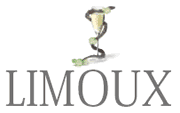As the calendar heads towards the season of weddings and graduations, it’s time to start thinking about buying bubbles for the celebration. Champagne, of course, is the traditional beverage for marking life-altering occasions, but when the celebrants are numerous,  and when cost is an object, there are many, many other corks waiting to be popped. Since the world is awash in good fizz these days, it’s only a matter of zeroing in on a style, a price point, and a region to select the right wine for the festivity. One terrific sparkling wine region to consider is Limoux, a comparatively cool section situated in the warm Languedoc area of southern France (Limoux lies just south of the medieval fortified city of Carcassonne). Limoux’s vineyards cluster around 41 different villages whose clay and limestone based soils are generally light and stony. In Limoux, the cool influence of the Atlantic Ocean meets the warm air that blows in from the Mediterranean, a confluence of climates that results in well balanced grapes characterized both by good, crisp acidity, and mellow fruity ripeness.
and when cost is an object, there are many, many other corks waiting to be popped. Since the world is awash in good fizz these days, it’s only a matter of zeroing in on a style, a price point, and a region to select the right wine for the festivity. One terrific sparkling wine region to consider is Limoux, a comparatively cool section situated in the warm Languedoc area of southern France (Limoux lies just south of the medieval fortified city of Carcassonne). Limoux’s vineyards cluster around 41 different villages whose clay and limestone based soils are generally light and stony. In Limoux, the cool influence of the Atlantic Ocean meets the warm air that blows in from the Mediterranean, a confluence of climates that results in well balanced grapes characterized both by good, crisp acidity, and mellow fruity ripeness.
Limoux is generally considered to be the birthplace of French sparkling wine, beginning in 1531 when local vintners discovered that wines which underwent a second fermentation in their bottles emerged full of bubbles. That breakthrough may have been completely accidental, but Limoux has been fine-tuning the art of effervescence ever since. The last time I was in the region, about six years ago, I tasted a few wines that were quite good, but in truth most of them seemed pretty pedestrian. On a visit earlier this year, however, I was pleasantly surprised by the widespread level of excellence in the sparkling wines I sampled. Good viticultural practices, improved winemaking techniques, and perhaps even climate change have all had a (mostly) positive impact in Limoux.
AOC designations for the sparkling wines of Limoux include Blanquette and Crémant (there are also red and white still Limoux wines, but that’s another story). Ninety percent of the grapes for Blanquette are required to be Mauzac, an ancient grape with the distinctive fresh aromas and flavors of green apples and fresh grass. Chardonnay and Chenin Blanc are Blanquette’s other grapes. Crémant, a newer and more internationally styled AOC sparkler, is made from a minimum of 40% Chardonnay, plus Chenin Blanc, and sometimes Mauzac, and/or Pinot Noir. For somewhat funkier, personality-infused fizz look for Blanquette Méthode Ancestral, a traditional, slightly sweet, often cloudy, low alcohol bubbly that sometimes tastes vaguely like cider. Overall, the sparkling wines of Limoux tend to be light and charming, with the best of them showing real complexity and substance. I even found a few  Limoux wines in the style I’m especially partial to: full-bodied, flowery fizz with mouth-filling, palate-pleasing yeasty components.
Limoux wines in the style I’m especially partial to: full-bodied, flowery fizz with mouth-filling, palate-pleasing yeasty components.
One of the reasons to start paying more attention to sparklers from Limoux is their wallet-friendly prices. As a general guideline, Limoux’s effervescent wines retail for around $10 to $15 a bottle. Among the labels you might find at local retailers are Sieur d’Arques, Antech, Toques & Clochers, Saint Hilaire, and Domaine J. Laurens. Limoux importers include Exclusive Imports, Baron François, Jack Poust, and Vignerons Imports. There’s much to love about Limoux, so when you’re making those wedding plans, remember that Limoux is just the thing for drinking a toast to love.
7
